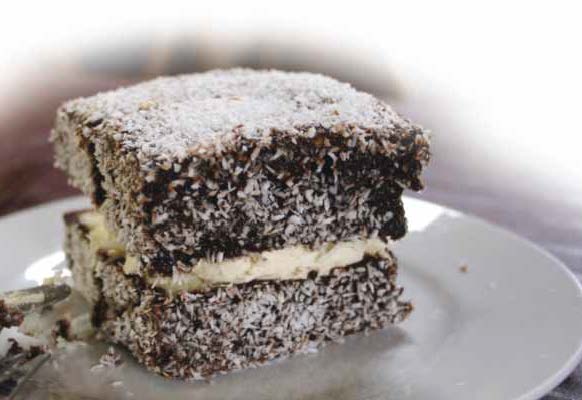
Eponymous dishes – what's in a name?

It is unlikely that you or I will get a dish named after us and even if we do we may be forgotten long before the dish is consigned to history. Here are some dishes that have stood the test of time.
Sole Veronika / Sole Veronique
The opera Véronique was produced in French at the Coronet Theatre in 1903. It was then performed in English at the Apollo Theatre in London beginning on 18 May 1904, where it enjoyed a run of 496 performances. With the success of the London run of Véronique, chef Auguste Escoffier created a new dish for London's Carlton Hotel: Sole Véronique.
Rick Stein has a good 21st century recipe for Sole Veronique. Look it up on the internet.
Peach Melba
The Peach Melba is a classic dessert, invented in 1892 or 1893 by Auguste Escoffier at the Savoy Hotel, London to honour Nellie Melba. It combines two popular summer fruits: peaches and raspberry sauce accompanied by vanilla ice cream.
In 1892, Nellie Melba was performing in Wagner's opera Lohengrin at Covent Garden. The Duke of Orléans gave a dinner party to celebrate her triumph. For the occasion, Escoffier created a new dessert, and to display it he used an ice sculpture of a swan, which was featured in the opera. The swan carried peaches which rested on a bed of vanilla ice cream and which were topped with spun sugar. In 1900, Escoffier created a new version of the dessert. For the occasion of the opening of the Carlton Hotel, where he was head chef, Escoffier omitted the ice swan and topped the peaches with raspberry purée. Other versions of this dessert use pears, apricots, or strawberries instead of peaches and/or use raspberry sauce or melted red currant jelly instead of raspberry purée.
Sandwich
The ancient Jewish sage Hillel the Elder is said to have wrapped meat from the Paschal lamb and bitter herbs between two pieces of old-fashioned soft matzah (flat, unleavened bread) during Passover in the manner of a modern sandwich wrap made with flatbread. Flat breads of only slightly varying kinds have long been used to scoop or wrap small amounts of food en route from platter to mouth throughout western Asia and northern Africa. From Morocco to Ethiopia to India, bread is baked in flat rounds, contrasting with the European loaf tradition.
During the Middle Ages in Europe, thick slabs of coarse and usually stale bread, called ‘trenchers’, were used as plates. After a meal, the food-soaked trencher was fed to a dog or to beggars at the tables of the wealthy, and eaten by diners in more modest circumstances. Trenchers were the precursors of open-face sandwiches. The immediate culinary precursor with a direct connection to the English sandwich was to be found in the Netherlands of the 17th century, where the naturalist John Ray observed that in the taverns beef hung from the rafters ‘which they cut into thin slices and eat with bread and butter laying the slices upon the butter’ – explanatory specifications that reveal the Dutch belegde broodje, open faced sandwich, was as yet unfamiliar in England. Initially perceived as food men shared while gaming and drinking at night, the sandwich slowly began appearing in polite society as a late-night meal among the aristocracy. The sandwich's popularity in Spain and England increased dramatically during the 19th century, when the rise of an industrial society and the working classes made fast, portable, and inexpensive meals essential.
It was at the same time that the sandwich finally began to appear outside of Europe. In the United States, the sandwich was first promoted as an elaborate meal at supper. By the early 20th century, as bread became a staple of the American diet, the sandwich became the same kind of popular, quick meal as was already widespread in the Mediterranean.
Beef Wellington
The origin of the name is unclear. Some theories suggest Beef Wellington is named after Arthur Wellesley, 1st Duke of Wellington; other theories go a step further and suggest this was due to his love of a dish of beef, truffles, mushrooms, Madeira wine, and pâté cooked in pastry, but with a noted lack of evidence to support this. Other accounts simply credit the name to a patriotic chef wanting to give an English name to a variation on the French filet de boeuf en croûte during the Napoleonic Wars. Still another theory is the dish is not named after the Duke himself, but rather the finished fillet was thought to resemble one of the brown shiny military boots which were named after him. Clarissa Dickson Wright, celebrity chef and co-host of the BBC cooking show Two Fat Ladies, maintains that the dish ‘has nothing to do with that splendid hero, the Duke of Wellington; it was invented for a civic reception in Wellington, New Zealand, but it is a splendid addition to any party’.
‘Wellington’ is sometimes informally used to describe other dishes in which meat is baked in a puff pastry; the most common variations are sausage Welling ton, lamb Wellington and salmon Wellington.
Lamington
Most accounts of the creation of the lamington agree that it was named after Lord Lamington, who served as Governor of Queensland from 1896 to 1901. One account claims the dessert resembled the homburg hats that he favoured. Another claim has them named after the village of Lamington, South Lanarkshire in Scotland. As the title Baron Lamington itself derives from the village, however, the question of this connection is merely whether it is direct or indirect.
Even among those who attribute the name to Lord Lamington, there are different claims as to the exact location and creator of the cake itself. According to one claim, lamingtons were first served in Toowoomba when Lord Lamington took his entourage to Harlaxton House to escape the steamy heat of Brisbane.
In another claim, Lamington's chef at Queensland's Government House, French-born Armand Gallad, was called upon at short notice to provide something to feed unexpected guests during the busy period leading up to Federation in 1901. According to the Melbourne newspaper The Age, Gallad cut up some left-over French vanilla sponge cake baked the day before, dipped the slices in chocolate and set them in coconut. Coconut was not widely used in European cooking at that time, but was known to Gallad whose wife was from Tahiti where coconut was a common ingredient. Lady Lamington's guests then asked for the recipe.
A further alternative claim is that Lord Lamington's cook, presumably Gallad, accidentally dropped a block of sponge cake into a dish of chocolate. It was later discovered that desiccated coconut, sprinkled over the top, made the cakes more appealing.
Most of these claims are based on relatively recent reports. The earliest identified mention of the lamington recipe was published in January 1902, but the identity of the contributor of that recipe was not revealed. Thereafter, the earliest reference to the naming of cake located so far is in October 1933, where it is attributed to Lord Lamington himself.
Ironically, Lord Lamington was believed to have hated the dessert cakes that had been named in his honour, referring to them as ‘those bloody poofy woolly biscuits’.
Caesar Salad
The salad's creation is generally attributed to restauranteur Caesar Cardini, an Italian immigrant who operated restaurants in Mexico and the United States. Cardini was living in San Diego but also working in Tijuana where he avoided the restrictions of Prohibition. His daughter Rosa (1928– 2003) recounted that her father invented the dish when a Fourth of July 1924 rush depleted the kitchen's supplies. Cardini made do with what he had, adding the dramatic flair of the table-side tossing ‘by the chef ’. A number of Cardini's staff have said that they invented the dish.
Julia Child said that she had eaten a Caesar salad at Cardini's restaurant when she was a child in the 1920s. The earliest contemporary documentation of Caesar salad is from a 1946 Los Angeles restaurant menu, twenty years after the 1924 origin stated by the Cardinis.
Your editor eagerly awaits the Sydney Masonic Centre serving the following:
- Langoustines Lauer
- Smoked Salmon de Brook
- Venison Gregoire
- Fruit Salad avec Damsons Derek
Article extracted from Freemason magazine, June 2014, pages 30 and 31.


